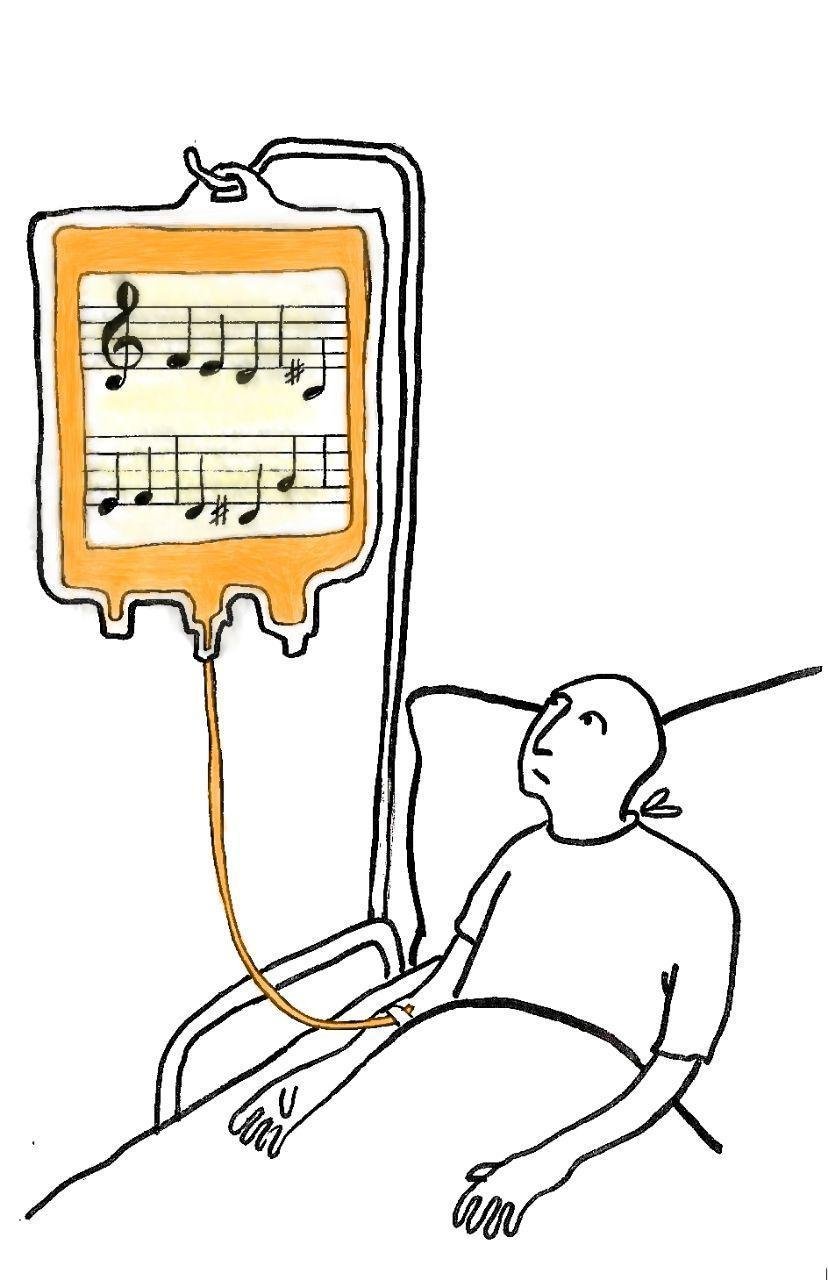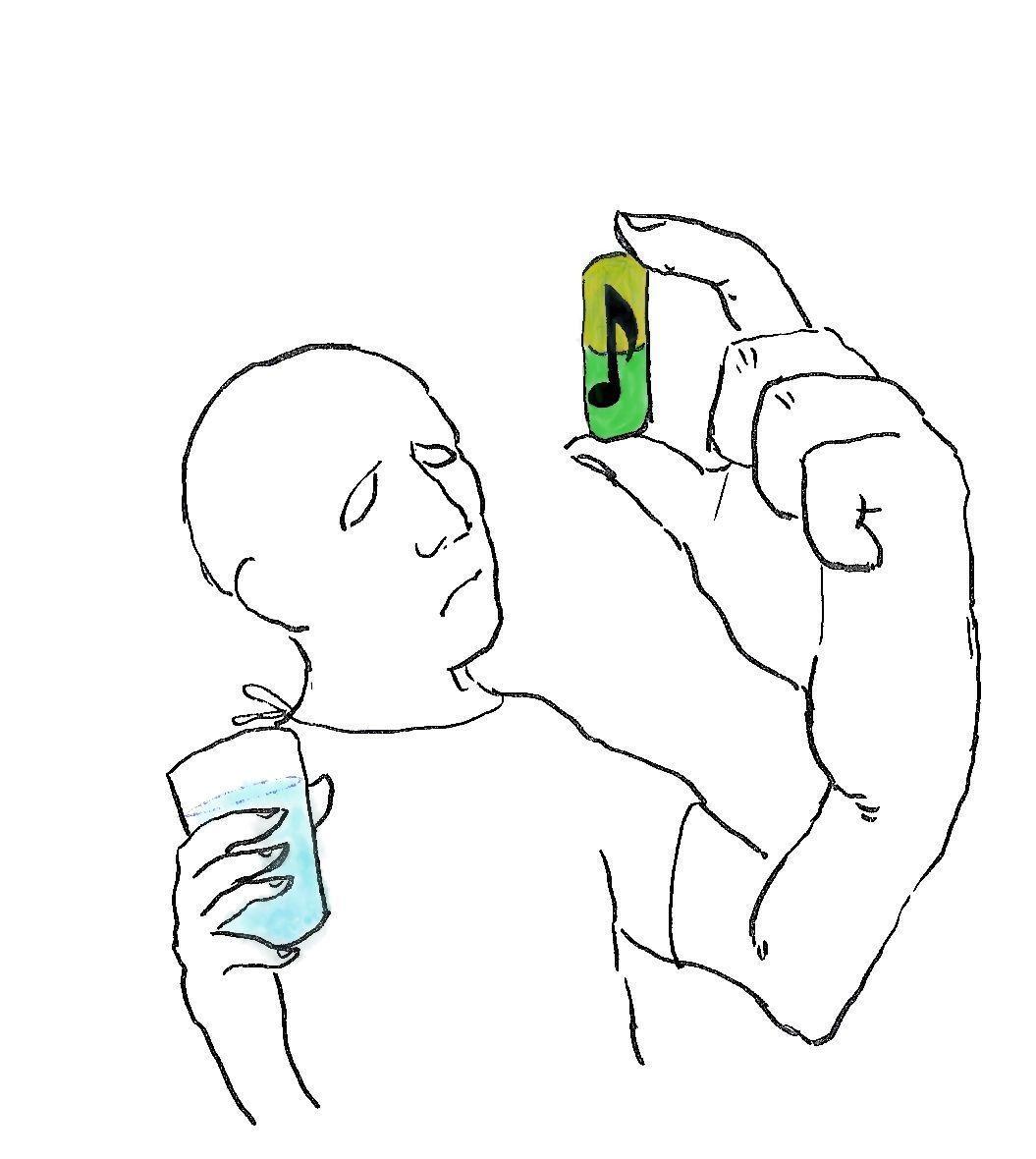Music and brain

Music is all around us. Whether you realize it or not, music affects us in a plethora of ways and comes in many different forms. Many people have their own selection on their phones, tablets, and laptops.
The earliest evidence of music comes from flutes that were carved out of bone. Researchers say that these flutes are around 43,000 years old. Shamans were using primitive music to bring bravery to their tribe fighters or giving them hope in their hunt for animals. Music is also often found during many occasions, such as celebrations. There is also a use of music in wars, sometimes as a means of intimidation or simply to unite the people in their fight against a common foe.
Some music, such as classical, can be used in therapy to treat patients with conditions like depression or anxiety. Listening to music such as classical, soft Jazz, and even rap has been shown to be relaxing, and can even combat depression. Listening to pop has even been demonstrated to give people a burst of energy, due to its upbeat nature. These phenomena are due to the melody at which the music plays. A slow tempo can cause a relaxing sensation, while a faster one may be more energizing. Some people think it depends on the instrument, but it is really about how they are played.
Playing an instrument also comes with its own set of benefits. Since playing an instrument stimulates both sides of the brain, it is directly linked to having improved long-term memory. It also helps calm us down and improves literacy skills.

Recently, as part of integrative medicine, music therapy has been added to the care of patients in some academic hospitals. In these settings music therapy is “prescribed” for different purposes, including better pain control and relaxation for cancer patients.
Finally to get a benefit from music many factors can be involved. Based on the emotional situation and the goal of the activity, the type of music can be individualized. The musical style, the instrument played, rhythm, pitch, whether passive listening or active performing is involved, accompanying activities such as dance, are among the different factors that should be considered.
Music and brain chemicals
Music and human history are tightly bound together. Although music has been used for different purposes and in varied settings in human history, it is only recently that it has been appreciated as part of alternative medical therapy. This has attracted scientific interest in delineating the physiologic changes that music can stimulate in the body, especially in the brain.

Music can increase dopamine levels and its synthesis in the brain. This elevated level can bring on a pleasurable feeling, a sense of well being. Dopamine can also regulate emotional responses such as feelings of pleasure based on novelty as well. This can motivate the listener to look for a similar experience again. Similarly, increases in the serum calcium level were noted during music exposure. Calcium enhances dopamine synthesis in the brain and subsequently inhibits sympathetic activity which can reduce blood pressure.
Changes in the level of endorphin activity are another effect of music in the body. Some researchers believe that the level of endorphin goes down in patients who were exposed to music leading to lower blood pressure. On the other hand, others state that the performance of music, and not just listening to it, elevates pain tolerance via the triggering of the endorphin release. It seems there is more research needed to describe in more detail, the impact of music therapy in the brain and its relationship with endorphin release.
Music has also been shown to increase serotonin release in the brain and improve the tolerability toward stress. Increased serotonin levels in the brain can affect mood, anxiety, and happiness too. As depression has been linked to low levels of serotonin, the main groups of antidepressant medications function by increasing the available level of serotonin, helping with both depression and anxiety. Some illicit drugs like Ecstasy can significantly increase serotonin levels.
Music can increase oxytocin levels in the brain. This effect can be felt as a sense of relaxation and an increase in social interactions. By increasing the level of oxytocin in the brain the listener can have a greater feeling of trust. In contrast, some researchers argue that they could not show this effect in their studies. Therefore it seems more research and interventions to study this supposed effect are needed. Music has also been shown to lower cortisol levels. Low levels of cortisol can also lead to a sense of relaxation and calm. It also can improve depression, fatigue, and mood disturbances. Music can also decrease the concentration of noradrenaline levels in the brain. Lower noradrenaline levels, due to parasympathetic nervous system activation, can help to cope with anxiety, resulting in a more relaxed state and better sleep.
Briefly, it seems that the relaxing and calming effects of music are being mediated by different neuroendocrine hormones and transmitters. Basic science has revealed a host of changes that can occur. Although these studies showed that different musical sounds, pitches, and rhythms can have specific outcomes more research is needed to clarify the physiologic effects of it. Hopefully, more knowledge can help guide musical prescriptions in the future.
Sources:
https://www.psychologytoday.com/intl/basics/dopamine
http://www.brainmusic.org/EducationalActivities/Sutoo_dopamine2004.pdf
https://www.ncbi.nlm.nih.gov/pmc/articles/PMC6420933/
https://www.sciencedirect.com/science/article/abs/pii/S1876382016304115
https://link.springer.com/article/10.1007/s12035-016-9934-y
https://www.sciencedirect.com/science/article/abs/pii/S0304394018301460
https://www.ncbi.nlm.nih.gov/pmc/articles/PMC5606297/
https://www.pnas.org/content/107/9/4389.short
https://onlinelibrary.wiley.com/doi/full/10.1111/j.1365-2702.2008.02718.x
https://psycnet.apa.org/record/1997-05310-011
https://onlinelibrary.wiley.com/doi/abs/10.1111/j.1365-2702.2011.03916.x





